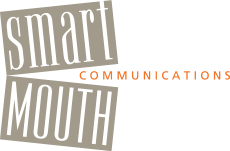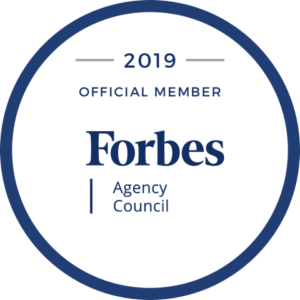
by Beth Levine | Apr 16, 2020 | preparing for a presentation, public speaking
One of my clients said to me recently, “The world of Zoom is like the Wild West… everyone is running in that direction, but many don’t seem to have a clue what they are doing.”
Amen sister! Zoom is a new frontier for sure, and lots of people are seeking – and others, offering – advice on how to keep virtual meetings and events interesting and engaging.

To that end, I thought about one type of meeting that could pose a real challenge online – the brainstorming session. How do you make and keep a virtual brainstorming session interesting, engaging, and inclusive?
So, at the risk of adding to the social media cacophony on effective virtual meetings and communications, here’s my one idea for Zoom brainstorming sessions (works best for teams of fewer than 10):
Time: Schedule the Zoom session for only 30 minutes.
Meeting invite: Scope out the central issue, question, idea or solution needed. Identify parameters and any specifics that brainstorming participants need to know.
Assignment: Ask participants to brainstorm on their own prior to the meeting (this works better for introverts anyway) and then to home in on their best idea and develop a 3-minute pitch around that idea.
Meeting agenda: Pitchfest! Make the Zoom session a Pitchfest, in which each participant takes no more than 3 minutes to pitch their idea and its rationale to the team. Meeting leader, be sure to time everyone!
Result: You can do an online poll afterward to rank the ideas, or you can let the ideas marinate for a while (e.g. 24 hours) and then hold a “watercooler” session via Zoom to ask questions, discuss, debate and decide. To ensure inclusivity and full engagement, make sure everyone has a chance to talk and ask questions.
If you try this, please let me know how it goes! I’d love to hear feedback!
by Beth Levine | Nov 18, 2014 | preparing for a presentation, public speaking
When you get up to talk or take the microphone at an event, it is not, and should not, be all about you—not if you want to be effective, impressive, and memorable, that is. There is an unwritten, unspoken contract with your audience that you, the speaker, will entertain, enlighten, or energize them. Personal stories need to support a point. The time you take needs to be used to deliver something of value. An audience waits for something new, useful, beneficial, or fun. Audiences like to be acknowledged somehow. In order to deliver on any or all of this, you must prepare your remarks with your audience’s experience in mind. That is the essence of being audience-centric.
Audiences all have biases, self-interests, and expectations. They have a very basic “what’s in it for me?” thread running through their subconscious. They want something in exchange for their time and attention. As if that weren’t enough, they also don’t want to work hard. Unless you guide them and tell them where you’re taking them, they won’t make the connections and get there on their own. To make matters slightly more challenging, competition for people’s attention is tougher, and their devices—cell phones, laptops, tablets—are ubiquitous (although the presence of devices can also be a good thing, as increasingly people use them to take notes).
Finally, an audience sizes you up immediately and, within seconds, decides if you are worth their attention and engagement. There are studies showing that this happens in the first eight seconds. Think about that: In the first eight seconds, people decide whether to listen to you or not. This certainly puts some weight on how you open your talk.
All of this adds up to a tall order. It demands that you, the speaker, think about your audience more than just superficially. Your topic and your time allotment may be fixed, but your audience is a variable, and that should guide you in preparing what you deliver and how. The experience you give them will stay with them longer than any words or data you share.
by Beth Levine | Jul 15, 2014 | Just Mouthing Off
I have two simple tips for you that are not brain surgery, but they do come from a doctor whose research focuses on the brain.
For my upcoming book, I have been digging into attention spans – how they work and how long they last. After all, if we’re talking to people, we want to make sure we’re grabbing and holding onto their attention. One of the more interesting books I took a look at was “Brain Rules” by Dr. John Medina. Medina distills his research down to 12 “brain rules” and two of them caught my eye.
The first was that people don’t pay attention to boring things. We pay attention to things like emotions and threats. Hmmm, that’s probably why storytelling is so effective and also why being able to identify your audience’s “pain” works well to grab their attention!
The second was that people need repetition to remember. People need to be exposed and re-exposed to material you want them to retain. This is not at all surprising to those of us who can remember almost every advertising jingle from our childhood!
So, you see? These tips are not brain surgery. You know both of these little fun facts. But the question for you to ask yourself is, do you consider these facts when you speak and present? Do you check yourself for how boring/interesting your material is and ask yourself what you can do and how you can package it, to make it more compelling? Do you build in some repetition of the important tidbits you need your audience to remember?
I’ll leave the rest to you, but I just wanted to share some fun summertime food for thought!





